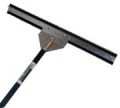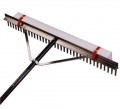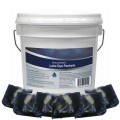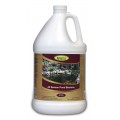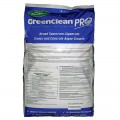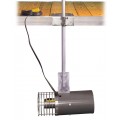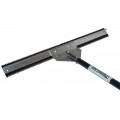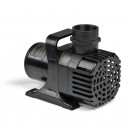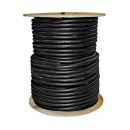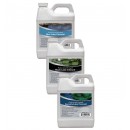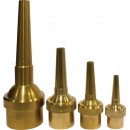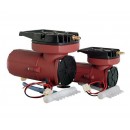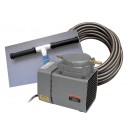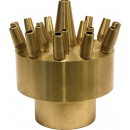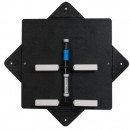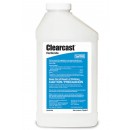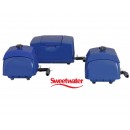Shopping Cart
0 item(s) - $0.00- Pond Sealant
- Aeration Systems
- Air Pumps & Compressors
- Algae Control
- Algaecides & Herbicides
- Bacteria & Clarifiers
- DC Compressors & 12V Pumps
- Diffusers & Airstones
- Dock Bubblers & Deicers
- Dyes & Colorants
- Fountains
- Large Ponds & Lakes
- Muck Removal
- Nozzles & Fountain Heads
- Pond Liner
- Pond Pumps
- Tubing & Accessories
- Water Level Control & Gates
- Water Treatments
- Windmill Aeration
- Commercial & Industrial Supplies
- Solar Aeration
-
Information & Articles
- - Aeration: The Key To Success
- - Air Compressors: Rotary Vane
- - Air Pumps: Linear or Diaphragm
- - Airline & Tubing for Aeration Systems
- - Algae Control
- - Aquatic Plants & Weeds in Ponds
- - Building A Dock Bubbler System
- - Building A Pond: The Basic Steps
- - Calculating Dissolved Oxygen Levels
- - Compost Aeration & Compost Tea
- - Diffusers: The Key To Efficient Aeration
- - Dock Bubblers & Deicers
- - Duckweed Control
- - Fountain For Ponds, Lakes & Small Gardens
- - Grease Trap Bacteria & Enzymes
- - Mosquito Control in Ponds
- - Muck: Removing Sludge & Pond Muck
- - Pond Aeration Systems
- - Pond Dyes: Aesthetics & Growth Control
- - Pond Liners
- - Pond Pumps: Submersible & External
- - Pond Winterization: Prepare Your Pond for Winter
- - Septic Bacteria Treatments
- - Solar Aeration, Solar Pumps & Solar Systems
- - Solar Aerator Parts List
- - Solar DC & 12V Pumps
- - Weeds & Eurasian Milfoil
- - Windmill Aeration & Windmill Pumping
- - Winterization of Ponds and Lakes
- - Beneficial Bacteria: Helping A Pond Naturally
- - Algae: Basics of Pond Algae
- - Oxygen Transfer Rates, SOTR & Pumping Rates of Aeration Systems
- - Pond Weed & Algae Control
- - Questions & Answers
- - Waterfalls: Building a Waterfall
- - Weighted Airhose, Airline & Tubing for Ponds
- - Links to Suppliers & References
- Consultations & Design Assistance
- Books & Guides
- Links & Resources
Aquatic Plants & Weeds in Ponds
|
When pond weeds and aquatic plants take over all is not lost. I have seen so many pond that have been practically ruined by aquatic plants! Many invasive rooted aquatic plants can wreak havoc by literally choking out a pond. Milfoil, Hydrilla verticillata or Hyrdilla, Vallisneria spiralis or Eel grass, Potamogeton crispus or Curly leaf pondweed, Typha anqustata or Cat-tails are all common pond weeds that can ruin the aesthetics of the shoreline and make the pond or lake virtually unusable. Using chemicals can be a last resort but manual removal, much like weeding out the dandelions from the garden, should be looked on as the very best treatment for these sorts of plant invasions. Of course, the plants are growing in nutrient rich "soils" at the bottom of the pond and these nutrients which form in the muck need to be reduced using combinations of aeration and natural bacteria to ensure that the growth of plants is limited. Recently I had a conversation with a member of a lake association who were plagued with lake weed problems. They were at the end of their rope! He told me that it was an artificial lake, was once a sandpit/quarry around 25 years ago that was purchased when water was springing up from below. The sandpit was dug out with many wells used to create a small lake but in the last few years there has been a proliferation of weeds, both [submerged/emergent and this year the weeds are thick through out the lake and there is pungent smell to the water. In the past owners have managed the lake by dragging a huge home made weed rake (iron bars with bolts dragged from a boat) along the bottom which dredged the bottom and removal of floating weeds was performed by the owners. It worked slightly but over the last 5 years each year has seen a dramatic increase in the weeds; there are 3 dominant weeds: a low to the bottom curly weed matting the bottom, a weed from the bottom with a tuber growing to the surface, on the tuber are curly leafs about every 5 inches on opposite sides from the bottom to the top with what looks like a rattle snakes tail protruding from the surface and the 3rd one looks like a pond weed with a long thin vine with a single leaf at the surface.
Aquatic Weed Cutters on Amazon - Lowest Price *affiliate links, we may recieve compensationfor purchases made on Amazon. Remove your Lake or Pond Weeds in Minutes with the Aquatic Weed Eradicator, similar to the Weed Razer® weed cutter, the Aquatic Weed Eradicator has a thicker serrated blade on both edges to allow for a push/pull sawing action to be used for touch weed invasions in ponds. The Aquatic Weed Eradicator is uniquely designed to be the most efficient and effective tool made to cut and removing submerged lake and pond weeds like milfoil and hydrilla. The Aquatic Weed Eradicator's serrated steel cutting blade clears a path 28" inches wide each throw. Weighing in at around 9 pounds it is light enough to toss into the pond and reach the weeds growing further out from the shoreline and it can also cut in deep or shallow water. The serrated blade slices the weeds right at the base of the growing plant so it can rapidly clear an area for swimming or recreation from unwanted invasive weeds. If you have full grown, mature lake of pond weeds within a 25 foot radius from your launch point and you want to cut a 4 foot wide path with each toss, then the Aquatic Weed Eradicator is the perfect tool for you. The Aquatic Weed Eradicator has extremely sharp steel blades. Whatever you want to call it; Weed cutter, Weed Razor, weedrazor, WeedRazor, Weed razor, this is probably the best way to deal with problematic aquatic weeds without using harsh chemicals. Beach Roller Aquatic Weed System *affiliate links, we may recieve compensationfor purchases made on Amazon. 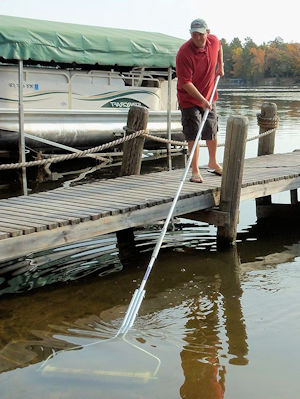 The Beachroller is very simple to use and is the long term, permanent solution to having a weed free beach! Simply put roller in the water, roller fills with water and sinks to the bottom. Push the Beachroller back and forth with the 16' handle on the lake bottom. The Beachroller is very simple to use and is the long term, permanent solution to having a weed free beach! Simply put roller in the water, roller fills with water and sinks to the bottom. Push the Beachroller back and forth with the 16' handle on the lake bottom.The roller with 6 custom weed cutting blades, cuts the weeds, rips out the roots and blast up the muck. Most weeds get cut off and fly off the roller, so you just keep rolling and do not need to touch the weeds! Overtime it rips out the roots, so the weeds do not grow back. Plus it is blasting up the muck, silt and lake bottom junk, other lake tools miss. Clean it up, then just maintain, using the Beachroller a few minutes when needed, if any weeds or silt tries to move back into your lakeshore area. Everyone will love having a clean, sandy, weed free beach! Gets to the problem... THE LAKE BOTTOM! Cuts the lake weeds. Rips out the roots, so weeds do not grow back. Blast up the muck and silt, getting down to the hard bottom. Simple and easy to use for everyone. Works in very shallow water to deeper water plus hard to reach areas around the dock. No maintenance required. Blades never need to be sharpened. No power required. No complex set-up. No permit required. Lightweight, super strong powder coated 16 foot aluminum handle. Industrial strength snap spring buttons. Quick attach 4' handle sections. The Brutal Truth About Pond & Lake Weeds I have seen a growing number of weed problems in lakes from Northern Minnesota to Southern Saskatchewan to Western Ontario to Eastern Texas...wow...I think I touched on every compass point but may have missed your state or province....but I've heard of it growing everywhere so don't depair...it's a common problem. Usually, there may have always been areas of a lake that are exceptionally weedy, but in the past four or five years the weeds have moved aggressively into the beach area or near docks and marinas. Most clients say the same thing: "I'm not certain that I want to spend thousands on this problem, as there needs to be changes to how the river valley and lakes upstream are managed to have any real influence on the water quality and weed levels in our lake. Having said that, I'd like to be able to clear the area around our dock, and I think the 'weed razer' looks like a product that might make that possible." All I can answer to that is...you need a cutter, a rake and a whole bunch of elbow grease. There are basically two ways to remove invasive and unwanted plants and weeds from ponds. Well actually there are three ways but the third way is to just ignore the weeds and live with them and don't let them bother you. So in reality there are two ways: Natural bacteria for ponds If the pond is small enough just the best way to remove the weeds or plants is to manually remove it day by day, hour after hour, until there is none left. Of course it is really tough to completely eradicate the problem but you can keep it under control just like keeping the dandelions out of the vegetable garden! You need a net with a long handle or a good quality aquatic rake to harvest this pond weed if you want to deal with this problem naturally or you can look into some carp species that will eat aquatic plants. 2 - The Chemical Way Aquatic herbicides and pond weed killers Aquatic algaecides and herbicides are very effective at controlling unwanted invasive pond species. You should understand that such algae problems, well...it's not really an algae but an aquatic weed plant, if they are treated with herbicides can lead to a dependency or resistance and scientists generally agree that chemical selection pressure that is applied applied to aquatic weed populations for a long enough period of time eventually leads to resistance. This means that while the chemical pond weed killer may work quickly and effectively for the first few years, unless you are adding a positive treatment with aeration and natural beneficial bacteria you will just be "chasing the dragon" so to speak!
Weed Rakes & Harvesters
|
||||||||||||||

The Pond Report
Pond Supplies for private pond owners and commercial pond managers.
Pond & lake products and treatments for natural pond care and aquatic management
Fast and free shipping from our Florida, California & Oklahoma Distribution Centers.
ThePondReport.com is a participant in the Amazon Services LLC Associates Program, an affiliate advertising program designed to provide a means for sites to earn advertising fees by advertising and linking to Amazon.com. Read our disclosure policy regarding the affiliations and commercial incentivizations of The Pond Report web site.
© 2006 - 2025

